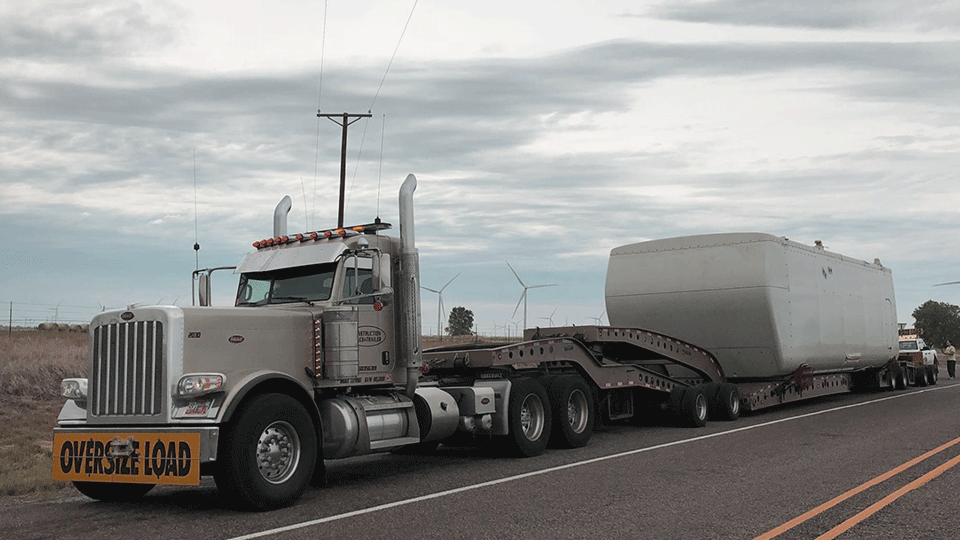
Without understanding the price you’re paying for your freight, maintaining a budget can quickly get out of hand. Freight rates and the factors that dictate them are constantly fluctuating. This can leave shippers wondering how to maximize their budget and reduce their spending.
At ATS, we’ve been working in the transportation industry for over 65 years so we understand this industry, truckers, shippers, consignees and shipping price, intimately.
In this blog, we’ll outline four aspects of your freight that may be negatively impacting the price you pay because they simply aren’t attractive to truckers. Additionally, we’ll give you some insight on steps you can take to reduce their impact on your bottom line.
In the end, you’ll be left with a better understanding of what you can do to blunt the impact these factors have on your freight costs.
The four factors that make freight less appealing to drivers and therefore increase your freight rates are:
- Having rigid pick-up/drop-off appointment times.
- Maxing out a trailer's weight capacity.
- Tarping and other accessorial charges.
- Interacting with remote locations at either end.
#1. Having Rigid Pick-up/Drop-off Appointment Times
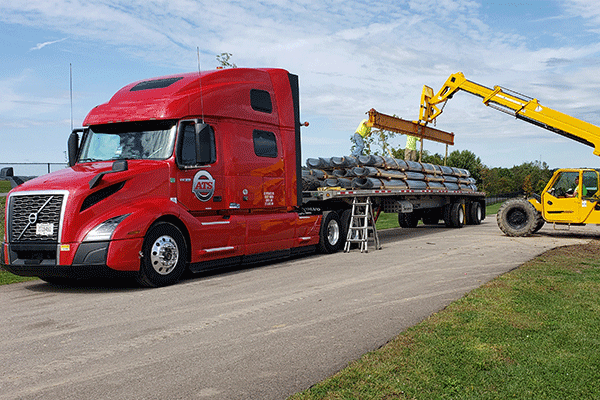
Some factors increase the price you pay to get freight moved more predictably than others. And, requiring drivers to meet rigid appointment times at either end of your shipments can often be one such factor.
You see, drivers are subject to several strict legal guidelines dictating how long they’re allowed to be actively on duty within a 24-hour period. And, as soon as a trucker starts their vehicle — signifying the beginning of their on-duty period — this hours of service (HOS) clock starts ticking.
Sometimes, strict pick-up/drop appointments kill their allotted on-duty hours and impact a trucker’s ability to turn their time into cash flow. If a trucker’s wheels aren’t turning they aren’t making money and, just like you and I, truckers like making money.
For the most part, there are two types of strict appointments that are more difficult for divers to meet and therefore more costly for you:
- Early morning pick-ups
- Afternoon deliveries
1. Strict Early Morning Pick-up Appointments
Getting a truck to your facility for an early morning (7 - 10 a.m.) pick-up is always a challenge and usually costs a bit extra.
This added cost, once again, comes back to a trucker’s desire to make the most out of their allotted on-duty hours — 14-hours within a 24-hour period. Early morning pick-up appointment times make this difficult.
To meet these early morning picks, truckers will need to be unloaded at some point the day before and sit empty overnight. Without having a load under them during this time, drivers are essentially giving up on money they could otherwise be making.
As you may suspect, this simply isn’t something that drivers eagerly sign up for…
Following their previous day’s drop, a driver still needs to get close to your facility to meet their appointment.
When drivers aren’t hauling a load, the distance they travel to situate themselves for an early morning appointment are called “deadhead” miles. Often, “deadhead” miles are factored into the cost of moving freight.
As such, expect to pay extra if a driver needs to drive empty to your facility for an early morning pick.
This issue of finding a truck for these appointments is compounded further if a trucker is needed for an early Monday morning appointment time. It’s just difficult to find an available truck coming off the weekend in the early hours.
To do so you’ll often need to find a trucker on Friday and get them to sit idly near your location for the intermittent days — which costs extra money. These early Monday pick-up appointments are usually highly inconvenient for drivers and finding capacity for them can be expensive.
2. Strict Afternoon Delivery Appointments
A driver’s HOS clock doesn’t stop or reset while they’re waiting for an afternoon delivery appointment. This means that — should your freight require it — to accommodate a strict afternoon delivery appointment (at 2 p.m. let’s say) a trucker will need to adjust their entire schedule to meet it.
Instead of simply showing up as soon as they arrive — like with first-come-first-serve operations— strict afternoon appointments mean that a trucker will have to sit and wait before driving to your facility — which kills their clock.
Since these drivers need to wait for your (let’s say 2 p.m. again) drop-off appointment it also becomes less likely that they’ll be able to find their next load.
Other shippers in your area typically close up shop for the night around 3 or 4 in the evening, which makes getting to their next load before closing time difficult for drivers.
As a result, for truckers — especially the experienced ones — loads with strict afternoon drop-off appointments are less attractive than those without.
Drivers understand they’ll have to go out of their way to plan around these appointments and this inconvenience comes at a price.
How to Reduce the Impact On Your Rate?
As a shipper looking to maximize your budget, the more flexibility you can provide on your pick-up and drop-off appointments the better.
Today’s trucking industry is completely driver-focused. They’re providing a service that’s in high demand which, in turn, gives them increased bargaining power.
And loads that truckers know will be an inconvenience for their clock, and therefore hinder their ability to make money, aren’t attractive to them.
As such, make sure to stretch out your timeframes. Instead of requiring a strict 7 a.m. pick-up appointment, consider a timeframe of 7 to 11 a.m. for your picks.
Although this isn’t always possible, allowing this flexibility with your timeframes will make it far easier to find a willing pool of carriers which will decrease your price.
#2. Maxing Out Trailer Weight Capacities
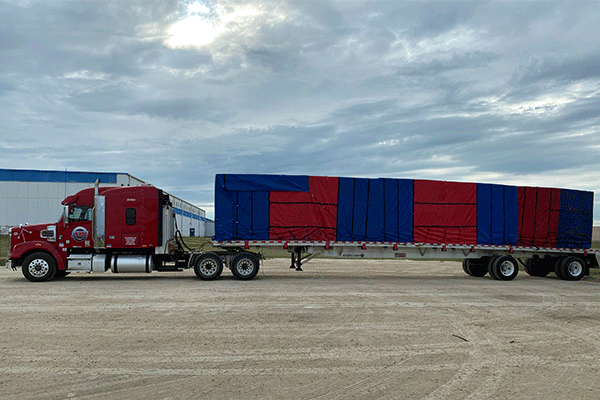
Although on the surface it makes sense to try and get as much weight onto each truck as possible, this can often be counter-productive.
Sure, adding that extra pallet — which takes your freight from 43,000 - 45,000 pounds in total weight — may seem like the right move.
You’ve got freight to transport, why not get it all out the door in one go? Doing so should increase your efficiency and help you avoid the price of securing multiple trucks. . . right?
Actually, this isn’t always true. . .
Given the choice between comfortably hauling 42,000 pounds of steel and moving a flatbed maxed with 48,000 pounds, truckers prefer the former — which hinders your ability to find a truck.
And, why wouldn’t they? Truckers aren’t paid more to transport marginally heavier FTL shipments and by doing so they risk damaging their trailer, the commodity in transit and their reputation.
No, lighter FTL loads are far more attractive to drivers and are easier to find truck capacity for as a result.
Often, adding that extra pallet — or 2,000 pounds — can mean the difference between easily securing a truck at a competitive price and overpaying for a solution due to an unwilling pool of carriers.
Beyond this, many trailers — especially lighter-duty ones — simply aren’t built to withstand maxed-out weight capacities. This makes finding a solution for your 48,000 pounds of steel more difficult as your pool of options shrinks.
How to Reduce The Impact On Your Rate?
Wherever possible, avoid maxing out a trailer’s weight capacities simply because you can. If you’re able, strive to marginally decrease the weight of your full truckload shipments.
For example, let’s say you have 120,000 pounds of goods to move. No matter which way you slice it, these 120,000 pounds will take three trucks to move. That said, this weight can be split in two different ways:
- You could front-load your freight so that two trucks are fully maxed (48,000 pounds each) and the last is left with less weight (24,000).
- You could evenly distribute the overall freight weight between the three trailers (40,000 pounds each).
Now, let’s take that first scenario; maxing out those first two trucks. By maxing out the first two trailers and hardly utilizing the last, you’re putting unnecessary stress on the trailers, drivers and the tractors pulling them.
Additionally, higher density shipments like these will cost you more as a trucker’s gas mileage and overall efficiency are hindered by these weights. In turn, the inconvenience of hauling these loads could end up costing you money on those first two trucks.
On the other hand, evenly distributing freight among three trucks (40,000 pounds each) could save you money. Truckers like easy freight and the more convenient you can make it for them to haul your load, by decreasing the stress it puts on their equipment, the more attractive your freight will become.
At the end of the day, maximizing your shipping budget comes down to appealing to the greatest pool of carriers possible. As your supply of potential carriers increases, your rate will decrease —being conscious of your freight’s overall weight per truck will increase your pool of willing carriers.
#3. Tarping and Other Accessorials
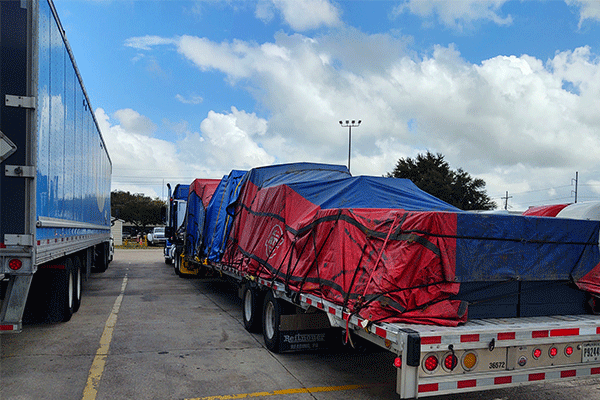
Tarping is a specialized method of freight securement that wherever possible, drivers like to avoid.
The time-consuming nature of securing and covering freight in this way makes it difficult for truckers to maximize their on-duty hours.
Tarping a load can sometimes take drivers hours to do properly and is especially challenging in the cold of winter or peak July heat. As such, if a driver knows they’ll need to spend time tarping freight — a process that’s often time-consuming, uncomfortable and exhausting — they’re less motivated to do so.
Additionally, drivers are conscious of the health of their equipment in these situations. Commodities with sharp edges on open deck trailers, for instance, pose a threat of damaging a trucker’s tarps during transit.
Although corner protectors can be used to combat sharp-edged open-deck freight, they’re mostly used to protect damage to the cargo itself and a trucker’s tarp (which isn’t inexpensive) may end up getting ripped.
For your reference, the total tarp investment on a truck/trailer usually rings in at roughly $1,381 — for a 6 piece tarp set. Of course they’re careful not to damage them :).
If your freight requires tarping or any other extra-effort accessorial charge, expect to have a harder time finding a driver willing to pick it up.
Not only will you pay the accessorial tarp charge when this service is required ($100-$150 for legal flatbed loads and more for over-dimensional/tall freight) but you may pay more to simply find a truck.
How to Reduce The Impact On Your Rate?
Foregoing tarping freight wherever possible will help you save money on your shipping costs. The accessorial charges associated with these requirements alone, when used habitually, can quickly get out of hand.
Throw in the fact that if carriers have other, less strenuous, options available to them they’ll likely choose to take those loads instead and you’re left with two options: Either pay more for these services or make it easier on drivers.
Some ways you can do this would be to allow truckers the option of throwing their tarps and securing freight inside, instead of out in the elements. Or, offer a helping hand and assist drivers in positioning their tarps. Some shippers even have light-duty cranes that they use to raise and position tarps for truckers.
Once again, the more convenient you can make your freight for a driver, the more relaxed your freight rates will become. If you absolutely can’t cut out these special requirements, make it easier on the drivers tasked with providing them.
#4. Having Remote Freight Pick-up/Drop-off Destinations
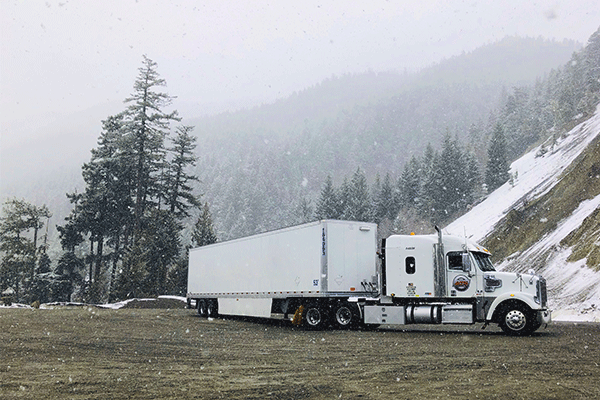
If your facility, or customer, is located in an area that’s far from the beaten path with little haulable freight and less demand for truck capacity, you’ve likely experienced the price hikes associated with this reality.
When picking up from remote locations, drivers are often forced to “deadhead” since finding inbound freight to these areas is difficult. As such, expect to compensate truckers for the empty miles they drive to reach these facilities.
On the flip side, shippers who have remote drop-off destinations may also pay more to find a truck, but for a different reason.
You see, understanding where their next load is coming from is of high priority to truck drivers. And, delivering freight to remote locations without any demand for their trailer space simply doesn’t motivate them to go there.
In the end, remotely located shippers/consignees typically see their rates increase primarily due to their level of isolation.
How to Reduce The Impact On Your Rate?
You can’t just pack up and relocate your company to a more vibrant shipping location, that would be silly. . . right?
You’re also not going to stop sending freight to your customers just because their location makes it a bit more spendy.
No, you need a solution that’s not so drastic. Enter; lead time and equipment type flexibility.
The easiest way that you can combat the added charges associated with remote locations is to give your transportation provider proper lead time to find your best fit truck.
Getting drivers to service your freight in these locations is far from impossible when you give your provider 24- 72 hours notice before your shipment must load, to help them find the correct solution for you.
The pricing structure in the trucking industry is dictated by supply and demand which means that the more options you open your freight up to the less you’ll end up paying.
As such, understanding that both a step deck and a flatbed trailer will fit your needs and searching accordingly will increase your pool of candidates and help you out on price.
Pick a Great Transportation Partner
And, we made it!
Now you understand how sticking to rigid pick-up/drop-off appointments, maxing out trailer weight capacities, requiring special securement methods and operating from remote locations can all impact the price you pay to get freight moved.
Your next step is to select a transportation partner that you can rely on for expertise and turn to whenever you need capacity. This kind of guidance is truly invaluable in such a fast-paced industry and using their seasoned expertise, these partners will help you maximize your budget.
That said, although it’s important, selecting the right partner for your needs can be difficult — especially with so many options available.
To help you do this, watch the video below where Derik and Crystal outline the top 7 things to consider when selecting a provider so that you’re better prepared to make these decisions going forward.
If, at its conclusion, you’d like to know more about how ATS can help you get your freight moving at the best price possible, reach out. We’re here to help you in any way we can.
